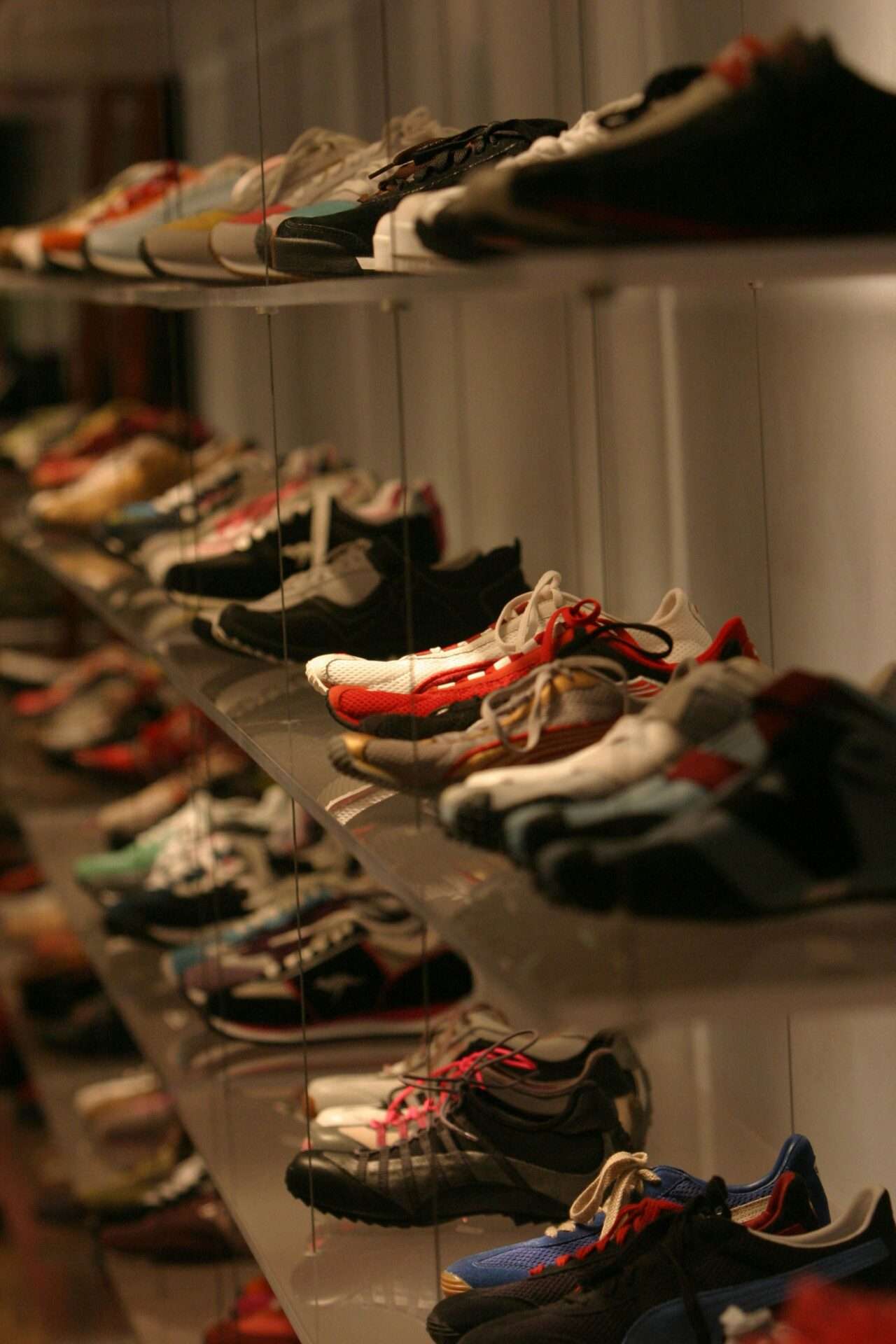The Ultimate 2024 Running Shoe Guide
Performance Categories & Top Picks
| Category | Key Features | Top Pick | Weight | Price |
|---|---|---|---|---|
| Lightweight Road | Breathable mesh, responsive foam | Nike Air Zoom Pegasus 38 | 8.5oz | $130 |
| Maximum Cushion | Plush midsoles, shock absorption | Hoka One One Bondi 8 | 10.1oz | $165 |
| Trail Running | Aggressive lugs, protective plates | Salomon Speedcross 5 | 10.4oz | $130 |
| Racing | Carbon fiber plates, energy return | Nike ZoomX Vaporfly Next% 2 | 6.2oz | $250 |
Specialty Options
Stability
Brooks Adrenaline GTS 22
GuideRails technology reduces excess movement
Minimalist
Xero Shoes Prio
6mm zero-drop for natural foot movement
Eco-Friendly
ASICS Novablast 4
20% bio-based Flytefoam Blast+ Eco midsole
Custom Fit
Nike By You
Fully customizable colors and materials
Expert Buying Guide
- Know Your Foot Type: Get gait analysis to determine if you need neutral or stability shoes
- Consider Your Surface: Road shoes vs. trail shoes with aggressive treads
- Match to Distance: More cushion for marathon training, less for 5K racing
- Try Before Buying: Visit specialty running stores for proper fitting
- Rotation Strategy: Consider owning 2-3 pairs for different workout types
Maintenance Tips
- Air dry shoes after wet runs (never use direct heat)
- Replace every 300-500 miles or when tread wears down
- Use shoe trees to maintain shape between runs
- Rotate between multiple pairs to extend lifespan
Technology Breakdown
Carbon Fiber Plates Provide energy return and propulsion in racing shoes PEBA Foams Lightweight, responsive materials used in premium models Rock Plates Thin protective layers in trail shoes to prevent bruising 4D Foot Scanning Advanced fitting technology used in custom shoes
Frequently Asked Questions
How often should I replace running shoes?
Every 300-500 miles or when you notice significant tread wear or midsole compression.
Are expensive running shoes worth it?
Premium models offer advanced materials with 20-30% better energy return and durability, but good options exist at all price points.
Should I size up in running shoes?
Most runners need a half-size larger than dress shoes to accommodate foot swelling during runs.
Final Recommendations
Best Overall
Hoka Clifton 9
Ideal balance of cushioning (29mm stack) and responsiveness (8.9oz)
Best Trail
Salomon Speedcross 5
Unbeatable grip with 6mm multi-directional lugs
Best Racing
Nike Vaporfly Next% 2
Carbon-plated propulsion for race day PRs



